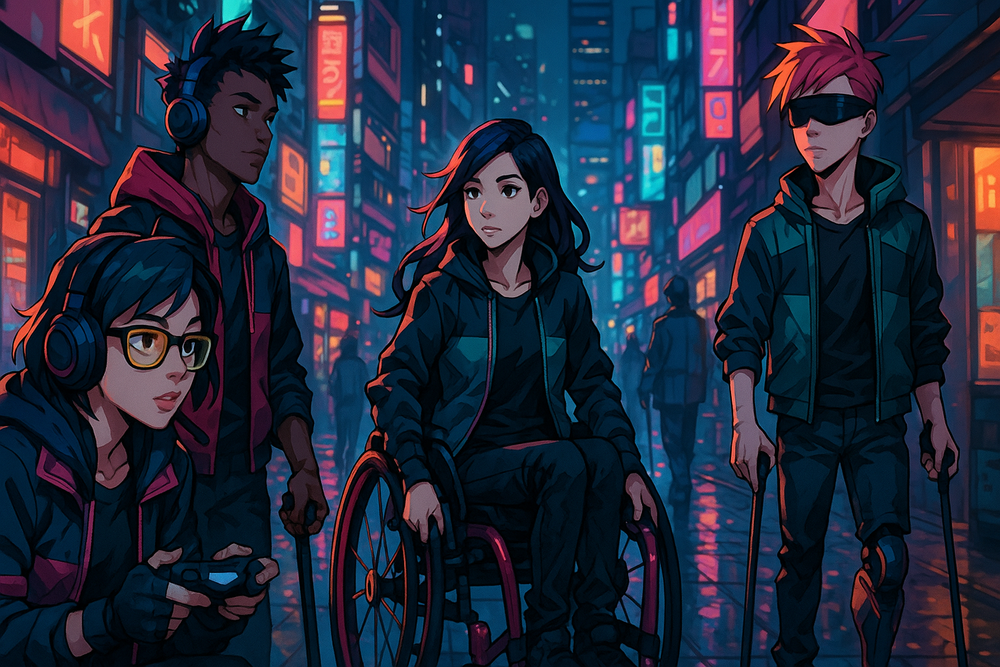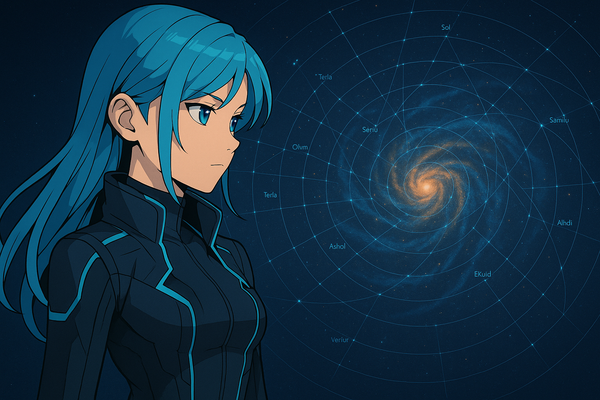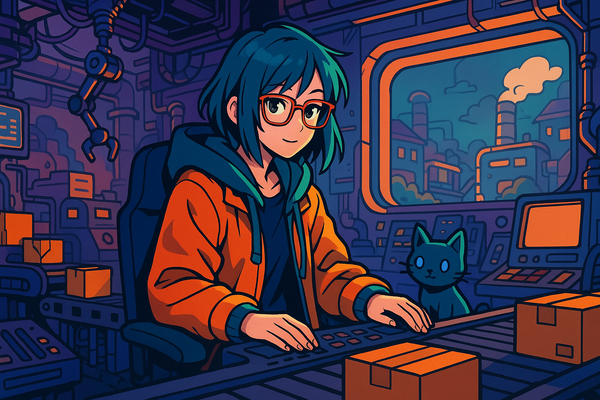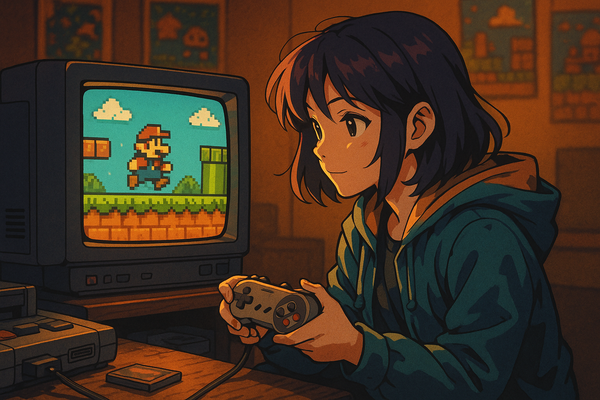The accessibility frontier: How indie games are leading inclusive design
The new wave of indie game development is proving that accessibility isn’t just a corporate checkbox – it’s a creative frontier. Over the past decade, small studios and solo developers around the world have quietly pioneered inclusive design features that even the biggest AAA titles often lacked. From remappable controls and dyslexia-friendly fonts to colorblind modes, subtitles, and cognitive assists, indie games are breaking barriers so everyone can play. And they’re doing it in their own nimble, community-driven style – sometimes well ahead of industry giants.
From niche concern to core value (2010–2015)
Not long ago, “game accessibility” was a niche topic. In the early 2010s, only a handful of developers – mostly enthusiasts and academics – were talking about it. A turning point came in 2012 when a coalition of studios and advocates launched the Game Accessibility Guidelines, a straightforward reference for inclusive game design (gamedeveloper.com). This free guide (along with AbleGamers’ Includification handbook released the same month) marked “the beginning of guidelines seeing broad uptake by developers”. At last, even the smallest indies had a practical playbook on how to avoid excluding players and ensure games are fun for as wide an audience as possible.
But some indies didn’t wait for permission to innovate. As early as 2010, one Xbox Live Arcade shooter called Shoot1up made waves by baking in unprecedented accessibility options. Its creator, Nathan Fouts, even published a list of accessibility guidelines alongside the game’s release – one of the first indie-driven efforts of its kind. Around the same time, advocacy groups like the IGDA Game Accessibility SIG and SpecialEffect (UK) were sharing “top 10” wishlists of features (e.g. subtitles, colorblind-friendly design, simpler controls) that would soon become pillars of inclusive design. These early initiatives planted seeds in the indie community: accessibility wasn’t just altruism, it could enhance game design for everyone.
By the mid-2010s, a few indies quietly introduced “quality of life” tweaks that doubled as accessibility aids. For example, Vlambeer (a Dutch micro-studio) ensured all their games had an option to enable subtitles by default – something even many AAA titles lacked at launch. Others experimented with one-button modes and high-contrast visuals in game jam projects aimed at blind or motor-impaired gamers. While such efforts were often small scale, they signaled a cultural shift. Accessibility was slowly moving from the fringe to the foreground, especially in the collaborative, experiment-friendly world of indie development.
Indie accessibility evolves (2015–2020)
Entering the late 2010s, the broader industry began to take notice of what indies were doing. In 2018, the independent platformer Celeste became a poster child for accessible design. This brutally challenging game shipped with an “Assist mode” that let players tweak the difficulty – slowing game speed, granting invincibility or infinite stamina, and otherwise customizing the experience to their needs. Crucially, the mode was presented in a positive, non-judgmental way, with on-screen text reassuring players that it’s okay to play how you want. The result was “a clever way of making a difficult game accessible to a wider audience… not insulting, not condescending, just accepting”. As one developer noted, Celeste’s assist options were “framed perfectly”, empowering players without diminishing the accomplishment. Many in the community hailed this as a renaissance for difficulty accessibility, proving that even hardcore games can welcome less-able players if developers are willing to “let go” of some control.
Indeed, Celeste’s creator Matt Thorson admitted it was a learning experience for him as a designer. “I spent many hours fine-tuning the difficulty ... it’s easy to feel precious about my designs,” he said. “But ultimately, we want to empower the player and give them a good experience, and sometimes that means letting go.” By putting ego aside, Thorson tapped into a key truth: if players can’t enjoy the game because of a barrier, the purity of the designer’s vision doesn’t mean much. This ethos – player experience over designer ego – has become a mantra for many indie devs leading the accessibility charge.
Other indie hits around this time also embraced inclusive design. Hellblade: Senua’s Sacrifice (by Ninja Theory, an “independent AAA” studio at the time) garnered praise in 2017 for its extensive subtitle options (including sizing and backgrounds) and a high-contrast “focus” mode to assist players during puzzles. In 2019, Outer Wilds (Mobius Digital) and Disco Elysium (ZA/UM) both launched to critical acclaim, but it was post-launch support that really shone: Outer Wilds’ small team listened to colorblind players who struggled with certain puzzles, and although resources were tight, they explored UI tweaks and even encouraged fan mods to improve color clarity. Disco Elysium, a text-heavy detective RPG, took the uncommon step of adding dyslexia-friendly fonts (OpenDyslexic, among others) in a 2022 update for multiple languages (resetera.com) – a nod to the sizeable dyslexic player base that most AAA RPGs had overlooked. Each of these examples showed an emerging pattern: indie studios, often agile and community-focused, were willing to iterate on accessibility faster than big studios burdened by bureaucracy or legacy tech.
It wasn’t all smooth sailing. Some indies learned the hard way that good intentions aren’t enough – you need concrete options. Celeste, for all its Assist Mode accolades, was critiqued by some disabled gamers for lacking certain basic features at launch. Its initial release had no colorblind mode, no control remapping, no option to reduce screen shake or add visual cues for audio – oversights that stood out especially because the game publicly billed itself as “challenging, but accessible.” One critique noted the disconnect: touting accessibility in marketing, yet “flat-out ignoring [some] disabled people” in practice (medium.com). To their credit, the developers responded – a toggle to disable screen shake was patched in, and they acknowledged the feedback. The episode was a humbling reminder that accessibility is a multifaceted effort; doing one thing right (like difficulty assists) doesn’t exempt a game from meeting other needs (like visual filters or captioning audio cues). Indies, often lacking dedicated QA teams, sometimes shipped without realizing these gaps – but importantly, they were listening and learning.
The 2020–2025 breakthrough: Accessibility as a design pillar
In the 2020s, accessibility in gaming has exploded into the mainstream consciousness. Major publishers like Sony, Microsoft, and Ubisoft began investing in robust accessibility suites for blockbuster games. But far from getting overshadowed, indie developers worldwide have pushed the envelope even further, frequently outpacing AAA peers in experimentation and player-centric design. In many cases, indies have become the “accessibility R&D lab” of the industry – trying ideas on a small scale that later inspire larger titles.
One clear sign of this shift is the proliferation of dedicated accessibility showcases and awards for indie games. For example, the Access-Ability Summer Showcase 2025 highlighted 20 upcoming or recent indie titles that exemplify inclusive design. The diversity of solutions on display was stunning. To address colorblindness, the puzzle game ChromaGun 2 (by Pixel Maniacs in Germany) devised a clever symbol system – each paint color is tagged with a unique shape (blue circles, red lines, yellow triangles, etc.), so even color-mixing puzzles can be solved via symbols instead of hue alone (caniplaythat.com). A small team solved in one stroke a problem that has plagued color-centric games for decades. Another showcase title, Soulblaze, packed in a buffet of options that would make a AAA studio blush: granular difficulty settings, fully customizable colors with icon indicators, UI and text size scaling, alternative fonts, and even built-in screen reader support for blind players. Yes, you read that right – a roguelite from a tiny studio included narrated menus and an “inspect mode” so that sightless players could get audio descriptions of on-screen elements. This kind of holistic approach was virtually unheard of in big-budget games until very recently, yet indies are proving it’s achievable on a budget with passion and knowledge.
Common accessibility features embraced by indies include:
- Remappable controls and inputs: Nearly all modern indies recognize the importance of customizable controls. Whether it’s rebinding keys, swapping thumbstick functions, or offering one-handed control schemes, remappable controls have become table stakes for inclusive design. This wasn’t always so – older games often hard-coded their control scheme. Now, even retro-style indie platformers or shooters include an input mapping menu by default. The impact can be life-changing: one player with cerebral palsy noted that because Street Fighter V (a fighting game by a small-ish Capcom team) allowed full controller remapping, he could compete and even win at a tournament – “Praise be this feature”, he wrote. Indies have taken this to heart. When one disabled gamer politely asked an indie dev for rebindable keys, at first the dev brushed it off (“intuitively mapped already”). After some dialogue, the developer came around – “their game will now have remappable controls!” the gamer reported, calling it a small but meaningful victory. This kind of direct feedback loop is more common in indie communities, where an email or Discord message to the dev is more likely to be seen (and acted on) than in AAA. The result: today it’s expected that an indie game on PC will let you remap keys or use alternative controllers, and if it doesn’t, players and press will call it out.
- Visual aids: Colorblind modes and readable fonts: Indies have been frontrunners in tackling visual accessibility challenges. Colorblind modes are now ubiquitous in the indie scene – from simple palette swaps (e.g. offering alternate tile colors in a puzzle game) to advanced solutions like shape-coding as seen in ChromaGun 2. Notably, even the hugely popular indie Among Us (2020) had to learn this lesson quickly. The game’s core mechanics involved color-coded tasks and player identities, which proved problematic for colorblind players. InnerSloth (the tiny North America-based team) admitted “it’s something we’ve put off for way too long” and swiftly updated the game to add a colorblind mode – now wires in the tasks have distinct symbols, and UIs display color names alongside player avatars. This quick turnaround (made just as Among Us’ userbase exploded) won the team praise and kept a whole segment of players from feeling alienated. Another area is text readability. Many indies, especially narrative games, now allow font changes or dyslexia-friendly typefaces. Disco Elysium’s Final Cut update in 2022, as mentioned, added the OpenDyslexic font across multiple languages. And it’s not alone – visual novels and text-heavy RPGs from indie devs often include options to swap to high-legibility fonts, increase text size, or change background contrast. This is partly due to influence from global guidelines (like advising sans-serif, high-contrast text for UI) and partly due to the practical reality that many indie devs are fans of retro pixel art or stylized fonts, which look cool but can be hard to read. Now there’s a growing norm: include a “clear font” mode or at least a large-print option. Players of all ages and abilities benefit – anecdotally, even non-dyslexic players sometimes switch to the dyslexic font or bigger text on high-res screens to reduce eye strain.
- Audio and captioning: Subtitles and beyond: Subtitles have long been a battleground in game accessibility, and indies have generally been quick to implement them (after all, many indie games use text dialogue by necessity). Today, it’s rare to find an indie title with voiced lines that doesn’t have subtitle captions – often on by default. But indies are now going further, adding what you might call “smart subtitles” and audio cues for the deaf/hard-of-hearing. Examples include visual sound effect indicators, like the red directional flashes in Infernium (a 2018 horror game by Carlos Coronado in Spain) that show which direction an enemy sound is coming from (nitchigamer.com). Coronado actually designed this feature so that deaf players could fully survive encounters by sight alone. He recalls that a friend and accessibility advocate pointed out how “with a little effort... the game would be 100% playable for deaf gamers by simply adding a red screen visual alarm” when danger was near. It was an easy add – and it opened the game to a wider audience. We see similar ideas across indie horror and action games: visual footstep indicators, flash or icon alerts for important sounds, and even full closed-captioning systems for ambient audio. The latter, admittedly, is mostly in bigger games (like Naughty Dog’s work), but indie horror title Phasmophobia faced criticism for not providing visual cues to its many audio clues – a misstep its small team has pledged to address after community feedback.Subtitles themselves are being handled more thoughtfully by indies: configurable sizes, speaker labels, text backgrounds, and synchronization with voice are becoming standard. Developers know that a significant portion of players use subtitles (not just deaf players – many people play on low volume or non-native speakers rely on text). As one veteran indie dev half-joked, providing subtitles isn’t really optional: “If games didn’t have subtitles, I wouldn’t know English today,” said one gamer – highlighting how vital text can be. Indie studios with limited voice acting budgets often lean on text anyway, so they take the opportunity to implement it cleanly. And thanks to public guides (like “How to do subtitles well”) and even platform pressure – e.g. Film Victoria in Australia began requiring basic accessibility features (like readable captions) in projects they funded as early as 2015 – the knowledge is out there.
- Motor and cognitive accessibility: Perhaps the area where indies truly leapfrog AAA is in accommodating players with motor impairments or cognitive differences through gameplay flexibility. Big titles have lately started adding features like toggle options instead of button holds, or slowing down quick-time events – but indies were experimenting with these years ago. Many indie devs inherently design simpler control schemes (often out of necessity), which can benefit players who struggle with complex inputs. Furthermore, indies are unafraid to add “god modes” or skips that purists might scoff at. We saw this with Celeste’s assist options, and it’s become even more common since. For instance, Infernium (the horror game mentioned above) launched as a brutally hard experience, but after release the developer noticed something intriguing: the most downloaded mods for the PC version were all ones that made the game easier or more explorative (like removing enemies). Rather than fight it, he embraced it. In a free update, Coronado added an official Accessibility menu with four big toggles: No Enemies, Slower Enemies, More Tutorials, and No Perma-Death. Essentially, he turned the community’s mods into built-in options for everyone. “Obviously, it’s not how I intended players to enjoy the game,” he said later, “but, hey, who am I to tell people how they have to play or enjoy!”. This liberating attitude – that once the game is in players’ hands, they should shape their own experience – is a hallmark of the indie accessibility approach. We see games now that allow difficulty sliders, assist toggles, and even level-skips or puzzle-skips in story-driven indies. Visual novels like Wednesdays (2024) include content warnings and let you opt out of disturbing scenes; a match-3 dating sim, Heart Spell: Horizon Academy, allows players to remove the puzzle gameplay entirely if they just want the story (no one gets gatekept from the narrative). These design choices recognize that players have different goals – some want the challenge, some just want the experience – and that’s okay. It’s a radical flexibility that many AAA games (with their tightly curated experiences) still hesitate to offer.
This flourishing of inclusive design has not been limited to one region. Indie accessibility is a global movement. In North America and Europe, communities of disabled gamers and developers have grown robust, exchanging ideas on Twitter, Reddit, and at events like GAconf. But elsewhere too, awareness is rising. In Japan, where historically many studios (indie and AAA alike) lagged in accessibility, developers have started catching up. In 2024 the Game Accessibility Association of Japan (GAAJ) was founded to translate resources and evangelize inclusive design in Japanese. They’re breaking down the language barrier so that a small indie team in Tokyo can learn from the same best practices as one in London or Seattle. In Latin America, accessibility conversations are gaining traction at indie showcases and game jams. Developers in Brazil, Argentina, and Chile are implementing features like subtitle customization and colorblind modes, partly thanks to the wealth of free guides now available in Spanish and Portuguese. For example, Spain’s 2012 CEAPAT project compiled 250 pages of accessibility research, which has influenced Spanish-speaking devs in Europe and Latin America alike. And let’s not forget the role of engines and tools: free plugins and templates make it easier than ever for a lone developer in, say, South Asia or Africa to include basic accessibility without reinventing the wheel. Unity and Unreal communities have produced open-source toolkits – like a Unity Accessibility Toolkit out of Austria that provides screen reader and navigation aids for blind players (techxplore.com). Such tools can be a game-changer for indies with limited time; as the toolkit’s creator put it, “With [this toolkit], we want to make it as easy as possible for indie developers to implement these options”, noting that 253 million people worldwide have visual impairments – a “very large group” of potential players.
Community feedback and mod support: Players as Co-Creators
One of the secret weapons driving accessibility in indie games is the close bond between indie developers and their communities. Indie players don’t just consume content; they often actively shape it, providing feedback, testing early builds, and even creating mods to improve their favorite games. This two-way interaction has accelerated the spread of inclusive features.
Consider the example of the indie hit Among Us again. When millions of new players (including those with disabilities) flooded in during 2020, issues like the lack of colorblind support or limited communication options became hot topics on forums. InnerSloth’s team publicly acknowledged these concerns – “It’s something we’ve put off for way too long,” they admitted regarding colorblind mode – and made an update a top priority. The fix (adding symbols to the wire puzzles and a color-blind friendly palette) rolled out within weeks, directly addressing player feedback. Similarly, when deaf players noted the reliance on sound for cues (e.g. the reactor meltdown alarm), the community circulated suggestions for visual alternatives. By engaging with their player base on Discord and social media, the developers could triage what accessibility issues were most urgent. This rapid feedback loop is a stark contrast to the glacial pace at which a large studio might gather and act on player accessibility feedback post-launch.
Mods (user-made modifications) also play a pivotal role. PC gaming’s modding culture has long been a playground for tinkering with game mechanics, and accessibility is no exception. If an indie game lacks a feature, there’s a good chance that a savvy player might create a mod to add it – and often, the developers welcome this. We saw how Infernium’s community produced a “no enemies” mod that ultimately inspired the official mode. Another example: fans of the ultra-hard platformer Cuphead (while not indie by team size, it’s an independent project) created mods to slow the game speed or give the player extra health, essentially fan-made assist modes. In many cases, indie devs respond by integrating these ideas officially, or at least by not blocking them. Openly embracing mod support is itself a form of accessibility – it empowers the community to tailor the game to their needs. Many indie titles ship with Steam Workshop support or easy-to-edit config files, implicitly encouraging players to tweak things like UI scale, fonts, or controller mappings if the default options don’t suffice.
Developers also lean on community testing for accessibility. Microsoft’s XAIL (Xbox Accessibility Insider League) and AbleGamers’ Player Panels are two programs that even small studios can use to gather feedback from disabled gamers during development (learn.microsoft.com). Indie teams have started tapping into these networks or simply recruiting fans via X for informal accessibility playtests. This kind of playtesting can reveal barriers the devs didn’t even consider. For instance, a solo dev might not realize their puzzle game’s reliance on subtle sound cues is a problem until a hard-of-hearing tester points it out. Or they might discover that a UI element is too small on Steam Deck for visually impaired players. Catching these issues early means they can be fixed before launch (saving the studio from patch scrambles and negative reviews). It hearkens back to the motto nothing about us without us – involving the disability community in design is the surest way to get it right.
And let’s talk economics: why are indies so motivated to implement these features, aside from altruism? One reason is that accessibility can be a smart business move for a small studio. Indie games often target niche audiences to begin with – and “gamers with disabilities” is a huge niche, often estimated at over 400 million people globally. In an industry of tight margins, attracting even a few thousand extra players by being known as accessible can make a difference. Disabled gamers and their allies are incredibly vocal online; they’ll champion games that do inclusion well. You can see this in anecdotes from social media: one gamer said they “just picked up this game 100% because of [an accessibility] feature”, emphasizing that “Game accessibility is so important!”. Others mention buying or recommending titles specifically because they heard the devs added subtitles or a colorblind mode. For indies that rely on word-of-mouth, this positive buzz is gold. On the flip side, ignoring accessibility can earn swift backlash. Gamers have become less tolerant of basic oversights, like missing subtitle options or tiny, unreadable UI text. An indie that launches in 2025 with no control remapping or no captioning will hear about it in reviews, likely hurting sales. As one Redditor bluntly put it, many indie games “fail despite being good” because “their biggest failure is usability. The controls, UI, and UX are often just terrible.”
Accessibility issues often are usability issues. The lines between “hard to use” and “impossible to use (for someone with a disability)” are often only a matter of degree. So, focusing on accessibility has the knock-on effect of improving overall user experience, benefitting everyone and giving a game a reputational edge.
Redefining game design through inclusion
Perhaps the most profound impact of the indie accessibility push is how it’s reshaping design culture itself. Inclusive design is no longer seen as a list of “features to add at the end,” but rather as a lens through which games are conceived from the start. Indie developers, unburdened by corporate pipeline mandates, can allow accessibility to drive creativity. We’re seeing games that use accessibility as a design inspiration: for example, a puzzle adventure where every sound has a visual or haptic analog by design (making it playable deaf or blind), or a platformer that can be controlled entirely with two keys, making it not only accessible to one-switch or one-hand users but also offering a fresh twist on gameplay for everyone.
The culture around accessibility has also changed. There’s a growing pride in the indie scene about being inclusive. It’s part of the identity for many studios – they’ll list accessibility features in their marketing materials and Steam descriptions, right alongside gameplay features. Stores have started adding filters for accessibility (Xbox and PlayStation stores now allow tagging games with things like “subtitle options” or “no rapid inputs required”). An indie that goes the extra mile can end up being featured in accessibility showcases, or even earn an accolade at the annual Game Accessibility Awards. This positive reinforcement creates a virtuous cycle: inclusive design is good press, good community, and good conscience.
Socially, the conversation has shifted from “Should games cater to disabled players?” to “How can we make sure we do?”. As one accessibility advocate put it, adding these options isn’t about doing anyone a favor – “you’re not doing charity, you’re doing your job”. Many indie devs take that to heart as a moral imperative. When you’re an independent creator closely connected to your player community, it’s hard to ignore the ethical dimension – you know the names and faces (or at least Twitter handles) of fans who benefit from an extra toggle or who are shut out by a lack of one. The result is a more human-centric development process. Even players have caught on to the ethos: that 8-year-old playtester who told his dev parent “hmm, but that wouldn’t work if someone is colorblind” shows the next generation of creators is already internalizing accessibility thinking. That is the future indie dev in the making!
Technically, inclusive design is reshaping workflows. Indies are starting from project kick-off with accessibility in mind, which is far easier than retrofitting later. Engines now have built-in high-contrast shaders, caption systems, and input rebinding frameworks, often thanks to open-source contributions from the community. For example, Unreal Engine’s default subtitle system and Unity’s new input system (which easily supports rebinds and multiple devices) lower the effort required. Some enterprising devs share accessibility plugins on the Unity Asset Store or GitHub – a huge boon for those who might not know where to start. The knowledge sharing is prolific: blogs, GDC talks, YouTube channels (like Access-Ability by Laura Dale, which regularly highlights indie accessibility successes and failures). This grassroots education means an indie team in 2025 is likely far more educated on these topics than one in 2015. The excuses for not at least trying have evaporated.
Economically, inclusive design has even influenced funding and platform support. Aside from grants requiring accessibility plans, we see platforms like Steam and itch.io hosting game jams focused on blind-accessible games or one-switch games (itch.io). These jams produce cool prototypes and raise awareness. Crowdfunding campaigns for indie games now often mention accessibility goals as a selling point to backers. And services like Xbox Game Pass have anecdotally nudged devs to include more options, since their games will reach a wide audience (including many folks who might try a game they wouldn’t have bought, only to bounce off if it isn’t accessible). All these factors nudge indies towards inclusivity not as a luxury, but as standard operating procedure.
Indies at the forefront of an inclusive future
From the one-person passion projects in a Latin American home office to the boutique studios in Europe and community collectives in Asia, indie developers have proven that accessibility is not opposed to creativity – it’s an expansion of it. By prioritizing inclusivity, they’re finding new gameplay mechanics, inventing novel interface solutions, and telling more enriching stories. They’re also building loyal audiences who feel seen, heard, and valued. The indie ethos of experimentation and community engagement turns out to be the perfect incubator for accessibility innovation.
Big-budget games are finally catching up, adding sign-language interpreters in cutscenes or myriad toggles in options menus, and that’s fantastic progress. But we must acknowledge that many of those ideas germinated in the indie space, where developers had the courage to try them early. As one Xbox director noted, when 2 billion people play games, “we have a social responsibility” to make them as inclusive as possible – a sentiment indie creators have embraced wholeheartedly.
The accessibility frontier is ever-expanding. The coming years will likely see even more creative collaborations between disabled players and indie makers – perhaps games that adjust themselves on the fly to a player’s needs, or community-driven accessibility “patches” that are officially adopted by devs post-launch. With each small studio that commits to inclusive design, the industry standard is raised for everyone. And most importantly, players who once felt locked out of the joy of gaming are finding that indie doors are wide open. In the words of developer Carlos Coronado, when you enable more gamers to enjoy your world, you quickly realize that “the player base [can] be much wider” than you ever imagined – and in the end, that’s a win-win for players and creators alike.
Indie games are leading the charge into this new inclusive era, one remappable button, one subtitle line, one custom font at a time. The rest of the industry would do well to follow – or better yet, join in the innovation. After all, the core magic of games is that anyone can pick up a controller (or adaptive device, or single key, or eye-tracker) and embark on an adventure. Thanks to the accessibility pioneers in the indie scene, that magic is closer than ever to being truly for everyone.




